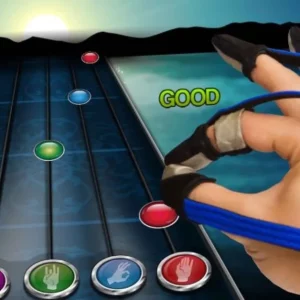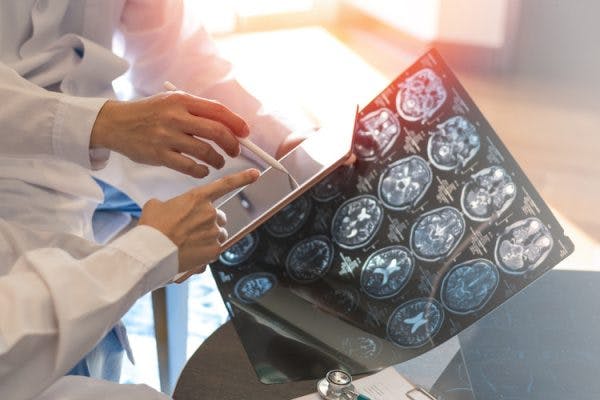Can stem cell therapy promote recovery after a stroke? This relatively recent breakthrough in stroke treatment appears very promising and research demonstrates the benefits of stem cell therapy after neurological injury.
One study utilizing stem cell therapy reported that some participants were able to regain the ability to walk and no longer required the use of a wheelchair. This article will introduce you to the concepts in stem cell therapy for stroke and provide you with background to understand the options when considering stem cell therapy treatment.
Use these links to navigate through this article as we discuss how stem cell therapy for stroke can promote recovery:
- What Is Stem Cell Therapy?
- How Does Stem Cell Therapy for Stroke Patients Work?
- Research Supporting Stem Cell Therapy for Stroke Recovery
- How Much Will Stem Cell Therapy for Stroke Cost?
- Stem Cell Therapy is Not Necessary for Stroke Recovery
What Is Stem Cell Therapy?
To understand stem cell therapy for stroke, you first need to understand stem cells. Stem cells are “a class of undifferentiated cells that can differentiate into specialized cell types,” according to Medical News Today.
In other words, they are unspecified cells that have the potential to become specialized cells based on their location. For example, stem cells can become cardiac cells, nerve cells, or blood cells depending on where they are placed.
Additionally, stem cells can divide indefinitely, producing other stem cells or specialized cells. In this instance, the new cells produced can be ideal for replacing damaged cells caused by neurological injury such as stroke.
Therefore, by implanting stem cells into areas of the brain affected by stroke, they ideally differentiate into neurons, and other supportive cells such as glial cells, which serve to support signal transmission between neurons. There are many supportive cells required to promote recovery that stem cells develop into, depending on their location.
How Does Stem Cell Therapy for Stroke Patients Work?
Stem cells can be injected directly into the tissues surrounding damaged areas of the brain. This is called intracerebral injection and is the most invasive stem cell therapy for stroke as it is a form of brain surgery. The benefit is that all the stem cells are placed directly in the area that needs them.
Intravenous injections are less risky and very easy to administer. But these stem cells are injected into the veins and therefore many stem cells may not reach the brain tissue. Stem cells can also be injected into the arteries directly feeding the brain such as the carotid artery. Or they are injected into the ventricles of the brain to supplement the cerebral spinal fluid that the brain floats in. There are pros and cons to the various delivery methods.
Leading stem cell researcher Dr. Gary Steinberg describes the effect stem cells have on the brain:
“…These [stem] cells don’t actually integrate into the brain long term and become neurons to reconstitute circuits. What they do is to pump out very powerful growth factors, molecules and proteins that enhance native mechanisms of recovery, such as new synapses of neurons that are there, new blood vessels, and they have a very profound effect on modulating the immune system. And in that way, what we believe they do is to turn the adult brain into a neonatal or infant brain, which has a lot of ability to recover after injury.”
Stem cells therefore promote an environment within your brain that resembles a young, cell-regenerating machine and helps stimulate neuroplasticity. Neuroplasticity is the central nervous system’s ability to reorganize its circuits based on our behaviors.
Research Supporting Stem Cell Therapy for Stroke Recovery
Although Dr. Steinberg’s clinical study only included 18 patients, the results of this stem cell research were impressive. Research participants reported substantial motor improvement. One patient in particular, Sonia Coontz, described her limbs as “waking up” after being asleep for years after her stroke.
To quantify these results, there was an 11.4-point improvement in motor function based on the Fugl-Meyer test, which is a scale used to measure patients’ movement deficits. These results translate to significant improvements in the participants’ mobility and use of their upper and lower extremities.
To quote Steinberg again,
“This wasn’t just, ‘They couldn’t move their thumb, and now they can.’ Patients who were in wheelchairs are walking now.”
Additionally, multiple preclinical studies have shown that stem cell therapy increases functional recovery after an acute, sub-acute, and chronic stroke. However, many questions regarding the mechanisms for how stem cells facilitate recovery remain unanswered.
Research on stem cell therapy for stroke is showing promising results, but it is in the early stages of development. In animal models, stem cell therapy has been demonstrated to significantly improve neurological function. Stem cell therapy for stroke recovery is in the early stages of clinical trials. However, trials with Mesenchymal Stem Cells and Neural Stem Cells have promising outcomes.
One major factor involved in stem cell therapy for stroke recovery is determining which type of stem cell to use. There are a variety of stem cells including embryonic, mesenchymal, neural, and induced pluripotent stem cells. While each type of stem cell has its specific beneficial properties, research seems to suggest mesenchymal stem cells and neural stem cells have the most promise for use in stroke recovery.
In addition to determining what type of stem cell is ideal for stroke recovery, other factors including the optimal timing of delivery and dosage need to be considered.
How Much Will Stem Cell Therapy for Stroke Cost?
If you’re interested in stem cell therapy for stroke, there are initial steps to take. Search for clinical trials in your area, and you may discover you fit their criteria to become a subject in these ongoing research studies. Clinical trials are generally free of charge because most are typically federally or privately funded, resulting in minimal or no cost to the subjects.
Search for clinical stem cell trials near you by going to this clinical trials web page and type in “stroke” under conditions, and type “stem cell” under other terms.
Stem Cell Therapy Is Not Necessary for Stroke Recovery
It’s essential to understand that stem cell therapy is not a requirement for stroke recovery. While stem cell therapy appears to be a very promising treatment in the future, it’s still in the developmental stage.
Recovery after stroke is focused on the brain’s capability of growth by neuroplasticity. Consistently practicing movements weakened by stroke stimulates the brain and strengthens neural control of the muscles. This encourages healthy, unaffected regions of the brain to rewire and resume functioning after a stroke.
Therefore, when you continue participating in therapy and performing repetitive practice of movements, you stimulate the brain and promote functional recovery. Rehabilitation after a stroke can occur even if it has been decades since your initial injury.
At Flint Rehab, we receive many first-hand success stories. For example, one patient who used MusicGlove hand therapy improved his hand function 24 years post-stroke. Another patient recovered from paralysis 7 years after his stroke by using FitMi home therapy. The brain’s neuroplasticity is ongoing, and improving function to participate in daily life is always possible.
Understanding Stem Cells for Stroke Recovery
Stem cell therapy is a promising procedure that may help individuals recover after a stroke. It works by transplanting stem cells into the brain tissue surrounding the location of the stroke. The stem cells boost the brain’s ability to release growth factors, molecules, and proteins that stimulate neuroplasticity and other recovery mechanisms.
No matter how long it has been since your stroke, there’s hope that stem cell therapy can help. Combined with traditional neurological rehabilitation that uses neuroplasticity to regain function, stem cell therapy has great potential for optimal recovery.
We hope this article has enhanced your understanding of stem cell therapy for stroke.










